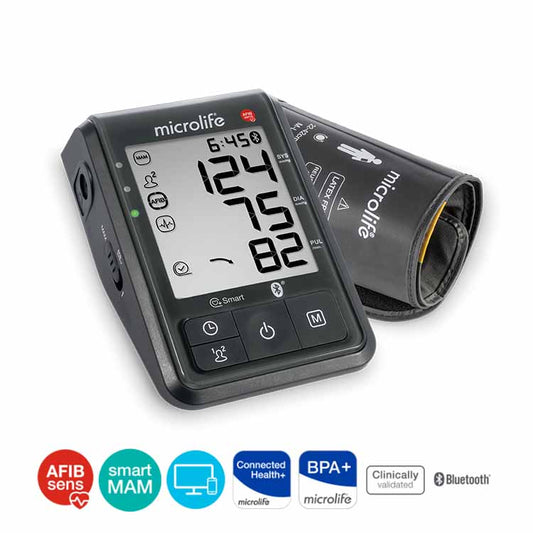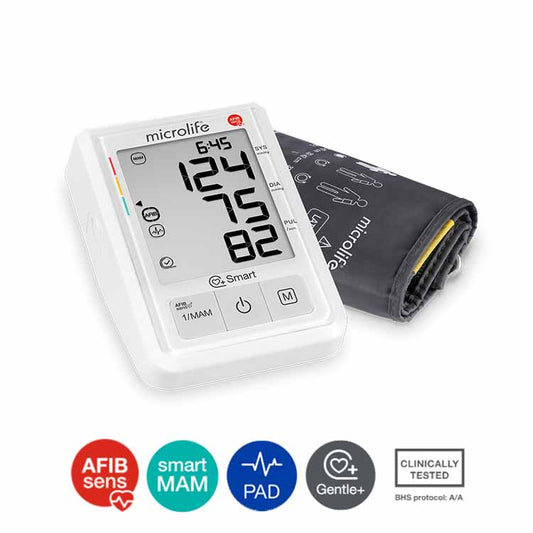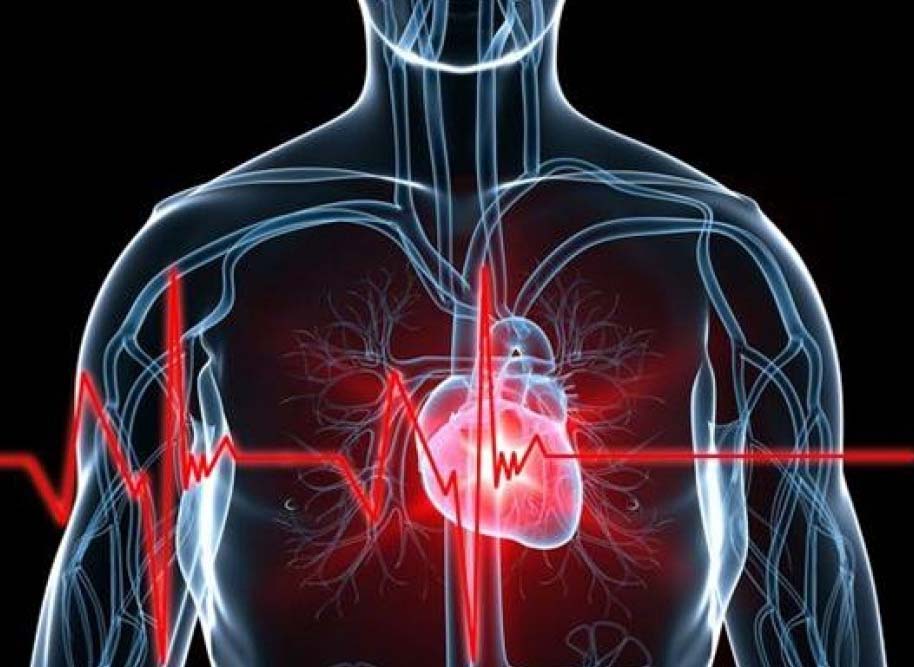
什麼是心房纖顫?
視頻: 【香港大學醫學院 - 心房顫動心臟健康專題 - 剪輯撮要】 簡易家用心房顫動測試
Learn About Atrial fibrillation
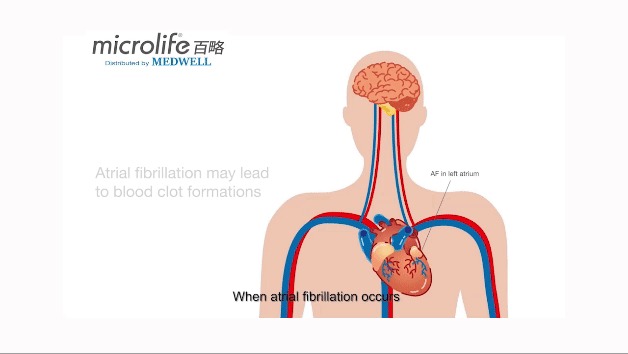
WHAT IS ATRIAL FIBRILLATION (AFIB)?
Atrial fibrillation (AFIB) causes high risk of stroke [1]. It leads to a 5-fold higher risk of stroke and is responsible for 20% of all strokes[6-8]. Approximately 40% of AFib patients have no symptoms [2] so that many of them are diagnosed by coincidence when hospitalized for other reasons [3], including stroke [4, 5]
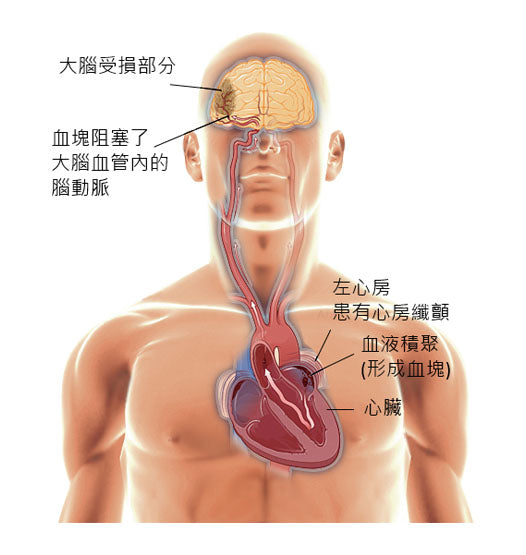
In the case of Atrial Fibrillation, the heart chambers beat chaotically and irregularly. This can cause blood to accumulate in the atria of the heart, clump together, and form blood clots. These blood clots can then migrate through the bloodstream to the brain, where they block the blood vessels and this causes a stroke.
The dangerous part of AFib is, that about 70% of the AFib episodes are asymptomatic and remain undiagnosed. In addition, at the beginning AFib generally appears only irregularly and can therefore be overlooked even during sporadic doctor's visits.
SYMPTOMS OF ATRIAL FIBRILLATION
Some people with atrial fibrillation have no symptoms. And those who do have atrial fibrillation symptoms may experience signs and symptoms such as: [6]
- Palpitations, which are sensations of a racing, uncomfortable or irregular heartbeat
- Weakness
- Shortness of breath
- Reduced ability to exercise
- Fatigue
- Lightheadedness
- Dizziness
- Confusion
WHAT CAUSES ATRIAL FIBRILLATION?
The cause of Atrial Fibrillation is not fully understood. However, the following risk factors can additionally increase the risk of having AFib:
- Age
- Hypertension
- Diabetes
- Obesity
- Cardiovascular diseases
- Stress
- Smoking and alcohol
WHO IS AFFECTED?
AFib is the most common sustained cardiac arrhythmia occurring in 5% of the population of 65 years and older and in 14% older than 85 years. AFib leads to a 5-fold higher risk of stroke and is responsible for 20% of all strokes. Many people have no symptoms from AFib and therefore remain undiagnosed. Early detection of AFib followed by adequate treatment can reduce the risk of a stroke by 68%. [7-9]

AFIB DETECTION BP MONITOR
-
MICROLIFE BP B6 CONNECT BLUETOOTH® BLOOD PRESSURE MONITOR WITH STROKE RISK DETECTION
Regular price HK$1,480.00Regular priceUnit price / per -
Microlife BP B3 AFIB Blood Pressure Monitor with STROKE RISK DETECTION
Regular price HK$1,380.00Regular priceUnit price / per
Read more
References:
1. Nichols M TN, Luengo-Fernandez R, Leal J, Gray A, Scarborough P, Rayner M European Cardiovascular Disease Statistics 2012. European Heart Network, Brussels, European Society of Cardiology, Sophia Antipolis 2012.
2. Boriani G, Laroche C, Diemberger I, Fantecchi E, Popescu MI, Rasmussen LH et al.: Asymptomatic atrial fibrillation: clinical correlates, management, and outcomes in the EORP-AF Pilot General Registry. Am J Med 2015; 128:509-518 e502.
3. Zoni-Berisso M, Lercari F, Carazza T, Domenicucci S: Epidemiology of atrial fibrillation: European perspective. Clin Epidemiol 2014; 6:213-220.
4. Sanna T, Diener HC, Passman RS, Di Lazzaro V, Bernstein RA, Morillo CA et al.: Cryptogenic stroke and underlying atrial fibrillation. N Engl J Med 2014; 370:2478-2486.
5. Gladstone DJ, Spring M, Dorian P, Panzov V, Thorpe KE, Hall J et al.: Atrial fibrillation in patients with cryptogenic stroke. N Engl J Med 2014; 370:2467-2477.
6. Atrial Fibrillation, Symptoms and Causes, Mayo Clinic. Available at: http://www.mayoclinic.org/diseases-conditions/atrial-fibrillation/symptoms-causes/dxc-20164936. Jun 2016
7. Camm AJ, Lip GY, De Caterina R, Savelieva I, Atar D, Hohnloser SH et al.: 2012 focused update of the ESC Guidelines for the management of atrial fibrillation: an update of the 2010 ESC Guidelines for the management of atrial fibrillation--developed with the special contribution of the European Heart Rhythm Association. Europace 2012; 14:1385-1413.
8. Hart RG, Benavente O, McBride R, Pearce LA: Antithrombotic therapy to prevent stroke in patients with atrial fibrillation: a meta-analysis. Ann Intern Med 1999; 131:492-501.
9. Ruff CT, Giugliano RP, Braunwald E, Hoffman EB, Deenadayalu N, Ezekowitz MD et al.: Comparison of the efficacy and safety of new oral anticoagulants with warfarin in patients with atrial fibrillation: a meta-analysis of randomised trials. Lancet 2014; 383:955-962.

